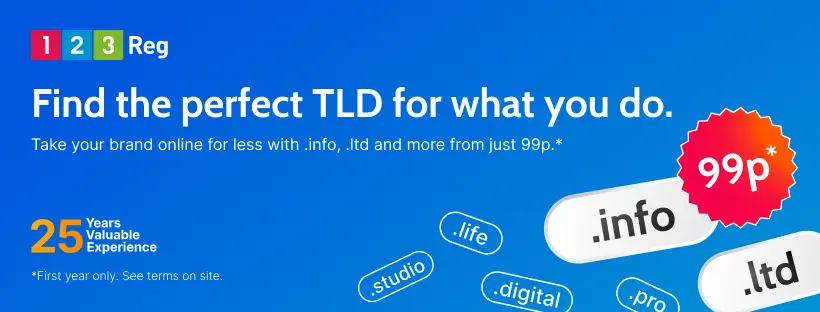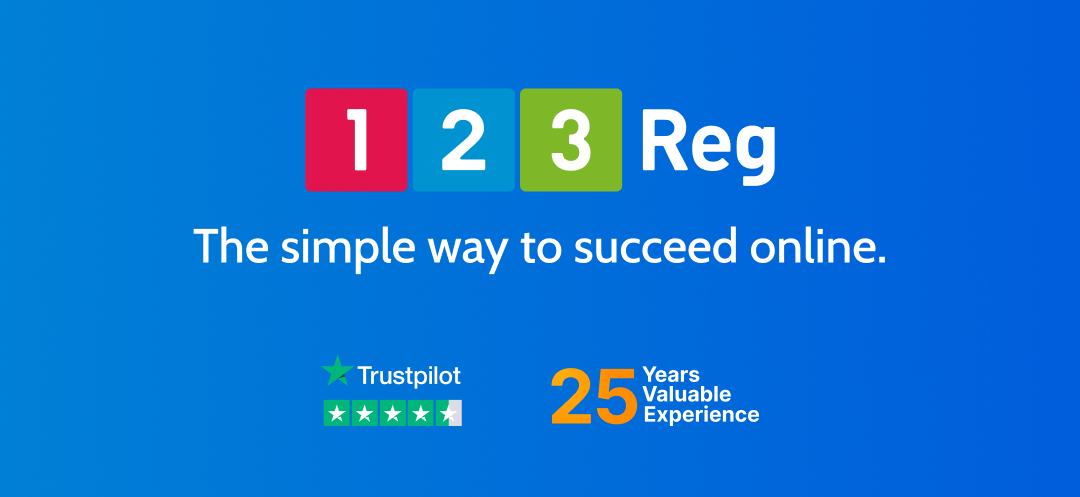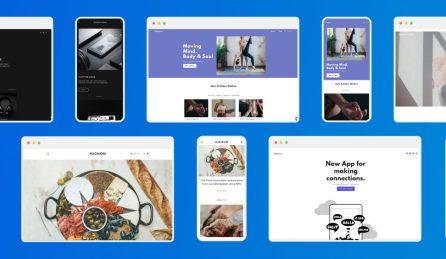Businesses today all face the challenge of holding onto customers in a fiercely competitive online world.
With so many options just a click away, shoppers can easily switch to a rival offering a better deal or experience. If you run a small online business, it’s natural to focus on getting new customers — but the real value often lies in keeping the ones you already have.
Customer retention is all about keeping your customers coming back for more. As we’ll discover, it can cost five to 25 times more to win a new customer than to keep one. The stats show that loyal customers tend to spend more, too. Learning how to build satisfaction and loyalty could be just what your business needs to get ahead.
What is customer retention?
It’s never easy — finding new customers. But whatever kind of business you run, it’s nearly always cheaper and easier to hold onto the customers you’ve already got than it is to go chasing after new ones.
Simply put, customer retention is about building lasting relationships with people who keep coming back. It means keeping your existing customers happy and engaged so they stick with you over time.
Why? Because happy customers are more likely to stay loyal, spend more, and recommend your business to others. The most underrated marketing tactic out there isn’t getting new customers — it’s keeping the ones you’ve already won.
It works both ways: loyalty drives retention, and the stronger your retention, the more loyal your customers become.
Every lost customer is like losing two: the one who left, and the one they might have recommended.
Customer retention is something you can measure. By tracking things like customer lifetime value, repeat purchase rates, and churn, you can better understand your customers and spot where your business could improve.
Two key metrics to keep in mind:
✅ Customer Retention Rate (CRR): the percentage of customers who stay with you.
✅ Customer Churn Rate (CCR): the percentage who leave.
A high CRR means your customers are happy. A high CCR? Time to dig deeper. But we’ll come back to those later.
Why customer retention matters
Depending what your business does (and who you ask) it can cost anywhere from 5 to 25 times more to bring in a new customer than it does to keep an existing one.
Loyal customers save you money, spend more over time, and help grow your brand through word-of-mouth.
According to OutBound Engine they’re: 5x times more likely to make a repeat purchase, 4x times more likely to recommend the brand to family and friends, and 7x times more likely to try new products or services.
That’s especially important online, where you don’t have the benefit of face-to-face interaction. Building trust takes time, and keeping customers becomes even more important. The lower your churn rate, the healthier your business.
Just a small increase in customer loyalty can have a big impact on your bottom line. Returning customers spend 67% more over time than first-time customers, while acquiring a new customer can be five to 25 times more expensive than retaining an existing one, according to Forbes.
92% of consumers believe that recommendations they’ve received from friends and family have more impact than advertising. Added to that, those customers who are loyal to your brand are also 1.9x more likely to defend it against criticism!
Having said this, the stats will depend on the industry you’re in. Statista reports that media and professional services businesses are much more successful when it comes to customer retention CRR (84%) than, for example, travel and hospitality industries (55%).
In short, here’s what strong customer retention gives you:
✅Increased profits: Repeat customers tend to spend more, more often.
✅Decreased acquisition costs: Less money wasted on chasing new leads.
✅Improved brand reputation: Loyal customers are your best advocates.
✅Improved customer lifetime value: Happy customers stick around and add lasting value.
Luckily, there are plenty of tactics small online businesses can use to keep customers coming back for more.
Stick around: 12 customer retention tactics to make customers stay
1. Add personal touches that surprise and delight
The best way to keep customers is to go above and beyond. A thank-you note, a cheeky extra in the package, or a tailored message based on past purchases — it all adds up.
It’s about creating little moments that make customers feel noticed, valued and happy to come back.
2. Build loyalty with rewards and perks
Loyalty programs are a classic for good reason. Offer discounts, early access, or exclusive treats for repeat shoppers. A simple points system can do the job — people love feeling like insiders.
A common method is a points system, where customers earn points for every purchase or interaction. They can trade these points for rewards such as discounts, early access to sales, free shipping, or tiered rewards that encourage spending more.
72% of global shoppers feel loyal to at least one brand, and 84% are more likely to stay with one that offers rewards. In the UK, 65% say they’re more likely to buy again if loyalty points are on offer. So it pays to say thanks.
3. Streamline the buying process
Making buying as easy as possible is key to boosting sales and keeping customers coming back. When browsing and checkout flow smoothly, customers are less likely to abandon their cart.
A simple, secure payment process leaves customers feeling satisfied and valued, which builds trust. Positive experiences turn into loyalty, and loyal customers often spread the word — increasing sales.
4. Be mobile ready
Over half of internet searches now happen on phones. The slice is even bigger when it comes to shopping purchases. Google prefers mobile, too, giving better search rank to pages that have been optimised for smartphones.
So while the mobile experience is important to all website owners, it’s an absolute must if you have an online business.
See also: Why You Need a Mobile-Friendly Website (and How to Get One)
5. Engage with social media and blogs
Keep customers in the loop with updates, offers and friendly reminders. Post regularly on social media, write the odd blog, and keep emails light and useful.
It’s not just chatter — 88% of business leaders say social insights help with customer care and retention. Sharing news and starting conversations builds a sense of community that keeps people coming back.
See also: Top 8 Social Media Management Tools
6. Make returns and refunds easy
Keep returns and refunds simple and fair, and you’ll win customers over for good. No one wants a long, tricky process that feels like trying to return a borrowed lawnmower to a grumpy neighbour.
Make it easy to show customers they matter. Big online retailers do this for a reason. When customers know they can shop without worry, they’re far more likely to come back.
7. Offer Buy Now, Pay Later
Buy Now Pay Later (BNPL) lets customers spread payments, so they don’t have to pay upfront all at once. This can boost sales, cut cart abandonment, and keep customers happy.
Partner with a trusted BNPL provider and make sure customers know this option’s available. Set sensible spending limits to keep things safe. And keep an eye on how BNPL is working for your business.
8. Get feedback and always follow up
Always ask for feedback. It’s one of the best ways to find out what’s working and what isn’t. Ask what they liked, what could be improved, and what they’d like to see in future. Then use that to make real changes. It shows you’re listening and that you care.
Use that insight to build customer profiles. Track habits, preferences, and the little things like what someone buys on a rainy day or how often they shop. This helps you send messages and offers that feel relevant and familiar.
And make sure to follow up. Get in touch after the sale with updates, a thank-you or a quick message asking how things went. These small moments help keep the connection strong and the customer coming back.
9. Create mailing lists and newsletters
Whatever your online business or site, you need a way to stay in touch. Since nearly everyone has an email address, building a mailing list is one of the cheapest and best ways to do that.
Use your site, social media, or checkout process to encourage sign-ups. Once you have a list, treat it well — send newsletters that inform, engage, and make your audience feel special. Friendly communication goes a long way in keeping customers coming back.
10. Offer stand out customer service
A quick chat or a simple question can turn into a standout moment with the right approach. Be easy to reach — whether that’s through social media, email or a good old-fashioned phone call.
11. Stay in tune with your market
Keep up with trends in your industry and pay attention to what customers want. Staying in tune means you’ll offer products and services they’re after, helping your brand stay top of mind.
12. And if all else fails… rebrand
If you’ve tried everything and customers are still slipping away, this might just be the internet’s way of telling you: it’s time for a shake-up.
A fresh look or new direction can breathe life back into your brand and catch people’s attention. Embrace change, listen to your audience, and redefine your online identity to win back those customers.
Sometimes, a bold move is just what’s needed to get your business buzzing again!
See also: .com vs .co.uk – Which Domain is Best For Your UK Business?
How to calculate customer retention (and loss)
If you want to get a better handle on how your customers are doing, there are three simple numbers to keep an eye on: Customer Lifetime Value (CLV), Customer Retention Rate (CRR), and Customer Churn Rate (CCR).
Customer Lifetime Value (CLV)measures how much money an average customer brings in during their time with your business. Since customers who stick around tend to spend more, a higher CLV is a great sign.
To work out CLV, you just multiply how much a customer spends over a period.
As an example, if someone spends £12 a month, their CLV over three years would be:
12 × 36 months = £432.
Knowing this helps you figure out how much to spend on bringing new customers in and keeping existing ones happy.
Customer Retention Rate (CRR) shows the percentage of customers a business keeps over a certain period. A high CRR indicates that the business is effectively keeping customers happy and engaged.
On the flip side, Customer Churn Rate (CCR) tracks the percentage of customers who leave during a set timeframe.
A high churn rate suggests something’s wrong — whether it’s customer satisfaction, competition, or other factors. Having a high “churn” rate is a bit like filling up a leaky bucket. No matter how many new customers you bring in, if others are slipping away, you’re never really getting ahead.
To sum that up:
CLV shows how much each customer is worth over time.
CRR reveals how many customers stick around.
CCR tracks how many customers leave.
For smaller businesses or side hustles, you might rely on gut feel to judge retention. But as your business grows, numbers like these help you see what’s really going on.
How to calculate CRR
Let’s focus on the positive with CRR to work out how well you’re keeping customers.
Imagine you start the month with 750 customers, lose 60, and gain 100 new ones, ending with 790 customers. To calculate your CRR, subtract the number of lost customers from your starting customer count, divide by the starting number, and multiply by 100.
1. Find the number of retained customers: Subtract the new customers (CN) from the total at the end of the period (CE). In this case: 790 – 100 = 690 retained customers.
2. Divide by the initial number of customers (CS): 690 / 750 = 0.92.
3. Convert to a percentage: 0.92 x 100 = 92%.
So your Customer Retention Rate is 92% — meaning you kept 92% of your starting customers during that period. That’s a solid result!
Wrapping up
Customer retention isn’t just a number. It’s a smart investment for small online businesses. If you keep customers happy, you can save money on acquiring new ones, make more money from each customer, and build a loyal fan base. With dedication and a bit of creativity, your business can turn one-time buyers into loyal fans who keep coming back.






